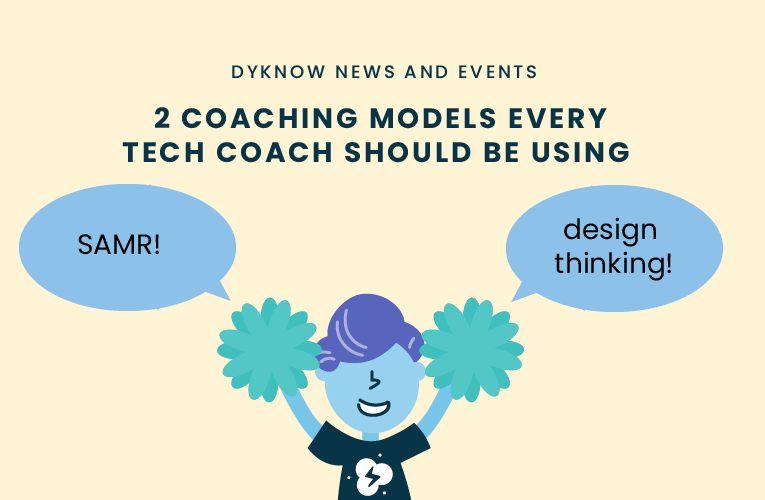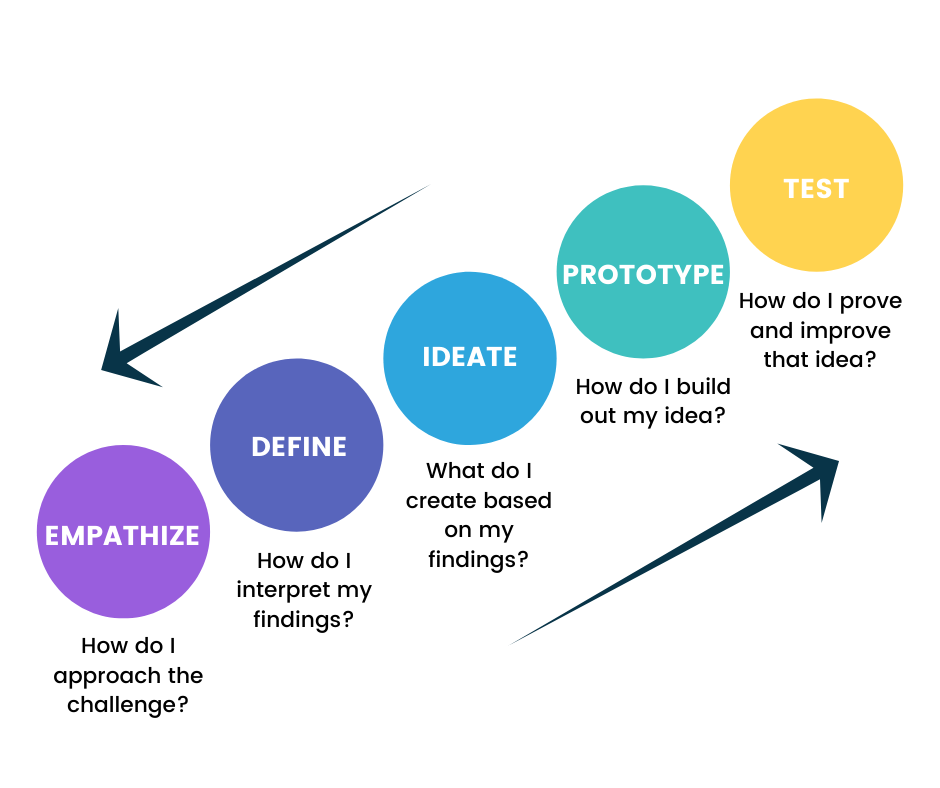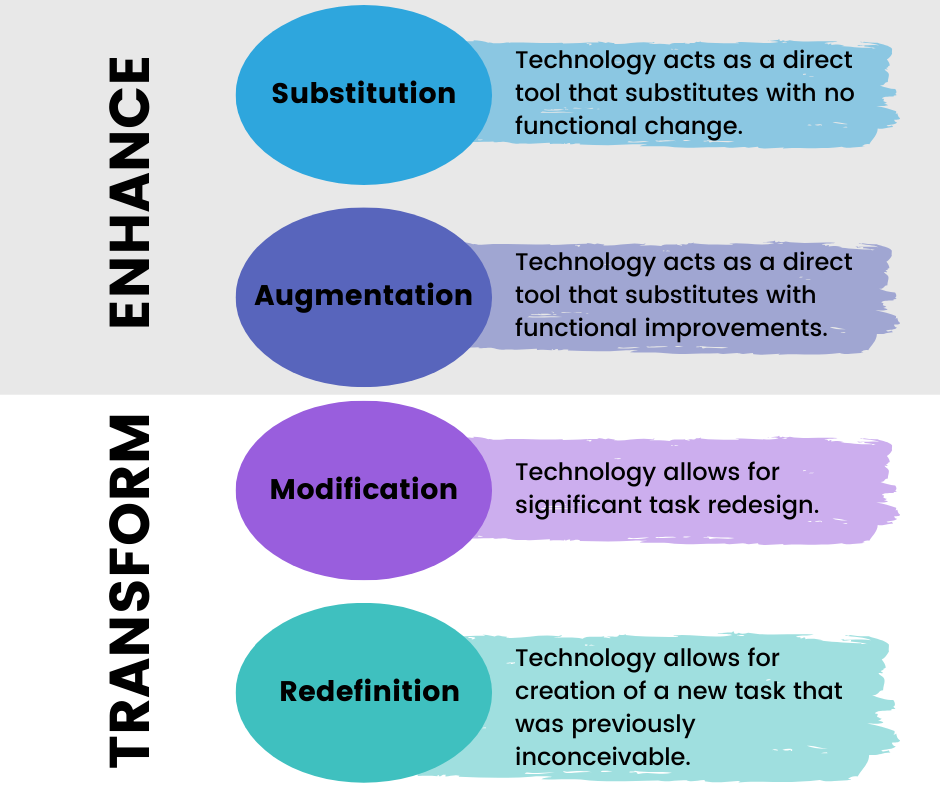In order for Tech Coaches to conduct effective professional development, it’s important to instructional coaching models that align with district and school goals. These models and frameworks enable Tech Coaches to create the most effective professional development and ensure that there is structure and intention behind how teachers are using technology to enhance instruction.
Two coaching models that should be considered when designing Tech Coaching tactics like professional development are Design Thinking and the SAMR Model. These frameworks are continually discussed in the EdTech space and were especially prevalent at FETC 2020. A team of Tech Coaches from Martin Country School District in Florida, explained how they combined these two models to create one of the most effective full-day Professional Development retreats for their district’s teachers.
Design Thinking as a coaching model…
Design Thinking is more of a methodology than a coaching model. It is a concept that is used across industries to effectively conceptualize and design new products and processes. In terms of Design Thinking in education, Harvard Unversity explains that Design Thinking is “a mindset and approach to learning, collaboration, and problem-solving. In practice, the design process is a structured framework for identifying challenges, gathering information, generating potential solutions, refining ideas, and testing solutions.” This model should be present both in the classroom and outside of it. In terms of Tech Coaching, Design Thinking should be incorporated into designing Professional Development strategies, and also incorporated into that Professional Development itself so that teachers can refine their Design Thinking skills and process.
What is Design Thinking?
Design Thinking is a 5 step process to identify challenges, design solutions and continually test for improvement. Here’s what it looks like in the context of a coaching model.
1. Empathize
Used as a coaching model you should lead with empathy when approaching teachers, and encourage your teachers to also approach their students with empathy.
- Ask yourself: “How do I approach the challenge?”
2. Define
Use your findings to dive deeper into what challenge you are faced with solving.Define the challenge you want to solve, what you want to help your teachers solve, and what teachers want to solve regarding their students.
- Ask yourself: “How do I interpret my findings?”
3. Ideate
This is the time to brainstorm! Come up with ideas based on your findings that support a solution to your challenge. Collaborate with other Tech Coaches and run ideas by your teachers before executing.
- Ask yourself: “What do I create based on my findings?”
4. Prototype
Decide what the most effective way will be to build out this idea for your coaching model. What supplies and resources will you need? Once you’ve answered these questions, you are ready to build.
- Ask yourself: “How do I build out my idea?”
5. Test
Designing your solution is only half the battle. Once you have designed and built a prototype it is important to continually test and improve that solution to make sure you are maximizing the outcome of your solution.
- Ask yourself: “How do I prove and improve the idea?”
The SAMR Model as a coaching model…
The SAMR Model is one of the most useful models for EdTech integration in K-12 classrooms. This model can help both Tech Coaches and teachers understand the four different degrees of technology integration in the classroom. SAMR can be extremely effective when developing coaching models for professional development because it gives Tech Coaches some direction as to what stage of integration teachers are in, or what level of technology their desired lesson requires.
What is the SAMR Model?
Substitution
This category refers to technology acting as a direct substitute for something else, with no functional change. Substitution falls into the “Enhancement” category of SAMR, meaning that introducing technology will enhance the lesson without transforming the way instruction happens.
Augmentation
This category is when technology acts as a direct substitute with functional improvement. Also falling into the “Enhancement” category, augmentation refers to technology enhancing and improving the functionality of a lesson, without truly transforming it.
Modification
This category refers to when technology allows for significant task redesign. Whether it be student collaboration through Google Suite, or other transformative lessons, Modification fits into the “Transformation” bucket, as modifying a lesson structure because of technology transforms the way that students experience it.
Redefinition
This category is when technology enables the creation of new tasks that were previously inconceivable. AR, VR, and 3D printing are all ways that technology has redefined learning in this century. Redefinition changes the way that Tech Coaches think about technology integration – it becomes more than just devices in the classroom.
When developing effective coaching models for professional development and beyond, Tech Coaches should take these two models into consideration. Tech Coaches should also be encouraging teachers to think about these models outside of just professional development. Teachers should be thinking about how these models apply to their instruction and their classroom on a daily basis. Keep an eye out for a learning opportunity where you can find out how to combine these two models for the most successful coaching model and professional development.
Want great content straight to your inbox?
Latest blog articles

Dyknow 2021 Year In Review
In addition to web browser updates and bug fixes, Dyknow released several major product updates, new features and enhancements. Check out Dyknow’s 2021 Year in Review!
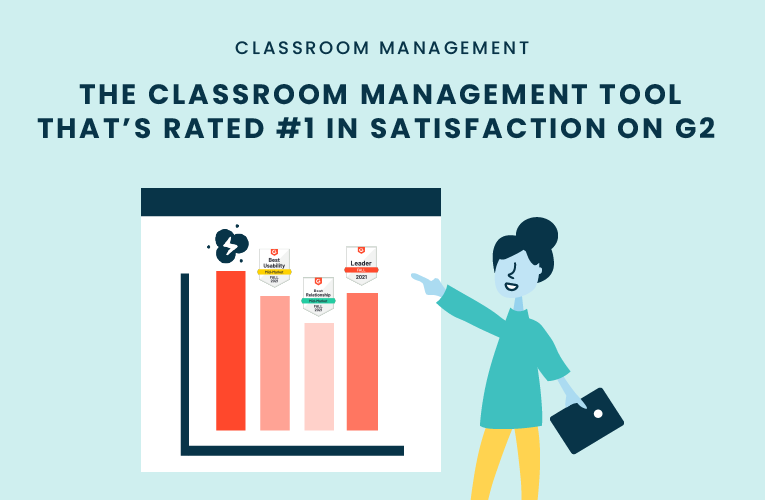
The Classroom Management Tool that’s Rated #1 in Satisfaction on G2
K-12 Administrators across the world trust G2 as the #1 platform to find, research, and choose EdTech tools that solve the most pressing problems their teachers are experiencing. In G2's Fall 2021 Reports, Dyknow was once again rated #1 in overall Satisfaction out of...
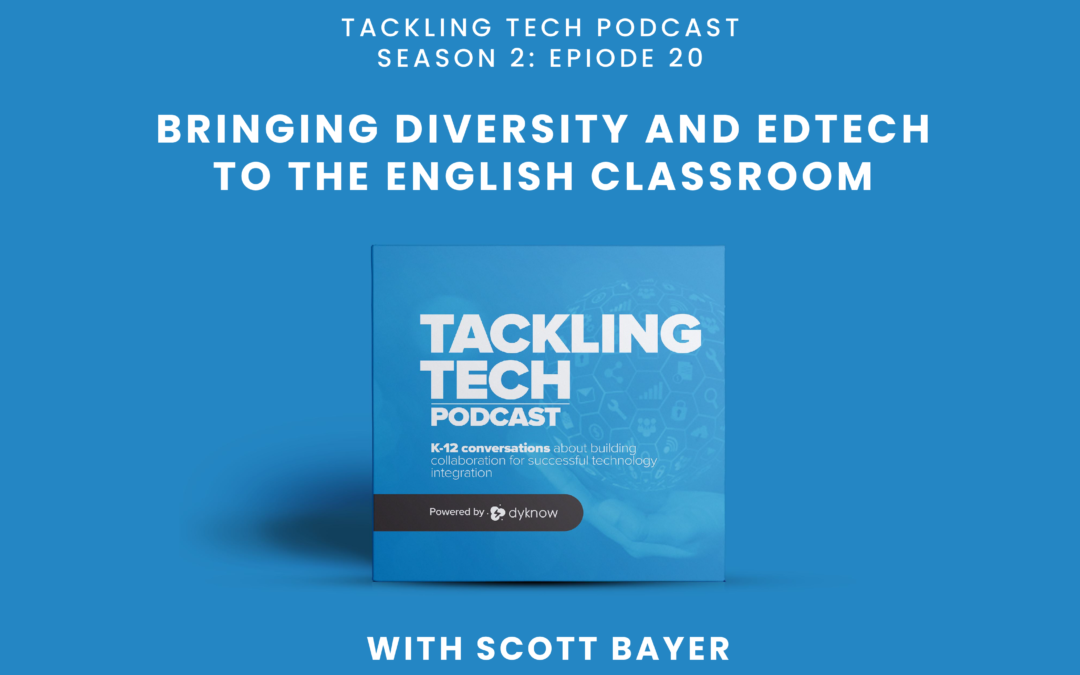
Bringing Diversity and EdTech to the English Classroom
On this episode of Tackling Tech, Tierra Leustig interviews Scott Bayer about being an anti-racist teacher, diversifying reading lists, creating inclusive learning environments, and leveraging ed-tech in non-technical ELA classrooms. Scott Bayer is a High School...

